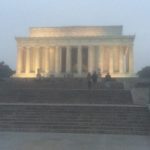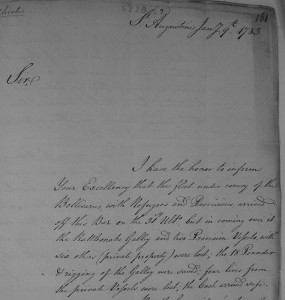
This letter, concerning the Storm Wreck vessel’s wrecking event, was written exactly 233 years before lighthouse archaeologists presented research on this wreck at the 49th annual SHA conference in Washington, D.C.
On January 9, 1783, the commander of the British Royal Army in East Florida, Lieutenant Colonel Archibald McArthur, wrote a letter to the British Commander in Chief, Sir Guy Carleton, to inform him of the loss of the Rattlesnake, two victualing ships, and six private vessels upon the bar at St. Augustine.
Exactly 233 years later, archaeologists, students, and colleagues of the St. Augustine Lighthouse & Maritime Museum’s research arm, the Lighthouse Archaeological Maritime Program (LAMP), presented the culmination of six years’ worth of research on the Storm Wreck, which archaeologists believe is one of the ships in the convoy Lieutenant McArthur refers to in his letter.
The fifteen papers presented featured many aspects of Storm Wreck research, from various artifact classes, to public outreach programs and the development of the Storm Wreck exhibit, to the microscopic clues found in the sediment surrounding the site. (Read our paper abstracts below!)
This daylong symposium was part of the 49th Annual Conference on Historical and Underwater Archaeology, hosted by the Society for Historical Archaeology (SHA). This year, archaeologists from around the world convened in our nation’s capital for the annual conference – an appropriate place as we celebrated the 100th anniversary of the National Park Service and the 50th anniversary of the National Historic Preservation Act, both of which played a significant role in the growth and development of the field of historical and underwater archaeology. The conference was held at the historic Omni Shoreham Hotel, which, for those history buffs out there, housed Philippine President Manuel L. Quezon and served as the base of operations for the Philippine government during World War II, and hosted every inaugural ball for 20th century American presidents beginning with Franklin D. Roosevelt in 1933.
Of course, any trip to Washington, D.C. would be incomplete without taking in at least a few of the sights. Most of us snuck away for a short time to visit a few of the Smithsonian Museums, the National Zoo, or the many monuments surrounding the National Mall.
By Wednesday evening however, we were back to business, attending the presentations of our colleagues over the next few days, and preparing for our own symposium on Saturday, January 9. The Storm Wreck symposium was well attended, and the response from colleagues across the field was overwhelmingly positive. Not only were there many comments on the quality of the research being done here at the St. Augustine Lighthouse & Maritime Museum, but also on the amount of students that have participated in the LAMP field school in attendance.
Nine of the fifteen papers presented were given by young archaeologists that previously participated in LAMP’s annual underwater archaeology field school, and eight other young archaeologists that participated in past LAMP field schools also attended the conference. All of the students in attendance have gone on to further internships, graduate school, or jobs in the archaeology field after participating in our program. Twenty-eight archaeologists associated with our program attended SHA this year, and that number continues to grow each year. We are excited to see that number grow, and to see our past and future students continue to succeed and make their mark upon the field of historical and underwater archaeology.
In addition to the Storm Wreck Symposium, the site was also featured in a presentation by lighthouse archaeologist Brendan Burke, concerning the remote sensing technology we use to monitor our underwater heritage here in St. Augustine.
As our excavations on the Storm Wreck draw to a close, this day long symposium was the perfect way to sum up the years of research we have put into this fascinating site, and a wonderful precursor to the opening of its new exhibit. The Storm Wreck exhibit, Wrecked!, is scheduled to open at the St. Augustine Lighthouse & Maritime Museum in early May, showcasing many aspects of the presentations given at this year’s SHA conference. Be sure to check in as we draw closer to the exhibit opening, and stay tuned for future research coming from the research arm here at the St. Augustine Lighthouse & Maritime Museum.
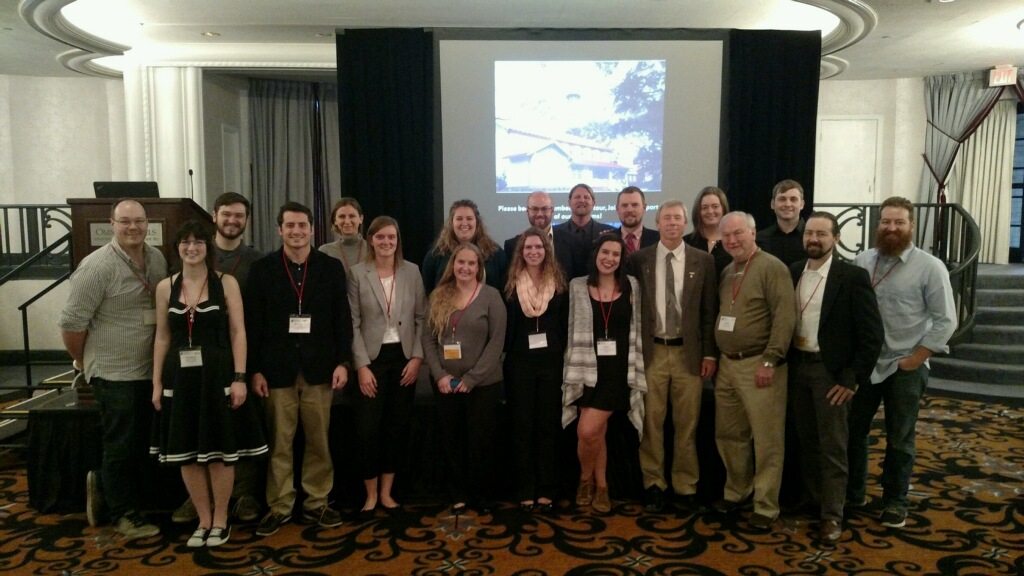
Lighthouse Archaeological Maritime Program staff and students presented a Storm Wreck Symposium at the annual SHA conference in Washington, D.C. this January. Shown here are nineteen of the twenty-eight archaeologists associated with the program in attendance at the conference.
PAPER ABSTRACTS:
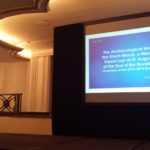 The Archaeological Investigation of the Storm Wreck, a Wartime Refugee Vessel Lost at St. Augustine, Florida at the End of the Revolutionary War: Overview of the 2010-2015 Excavation Seasons
The Archaeological Investigation of the Storm Wreck, a Wartime Refugee Vessel Lost at St. Augustine, Florida at the End of the Revolutionary War: Overview of the 2010-2015 Excavation Seasons
Carolane Veilleaux and Chuck Meide
The Storm Wreck, site number 8SJ5459, was discovered in 2009 by the Lighthouse Archaeological Maritime Program (LAMP), about a mile offshore St. Augustine, Florida. It has been excavated every year since then in conjunction with LAMP’s underwater archaeology field school. A wide range of artifacts has been recovered, including ordnance, firearms, ship’s equipment, tools and hardware, personal effects, and household items, and are now being conserved at the St. Augustine Lighthouse & Maritime Museum for display in an exhibit planned to open in 2016. The wreck has been identified as one of sixteen British ships lost while bringing refugees to St. Augustine on or around 31 December 1782. They were part of the last fleet evacuating British troops and Loyalists from Charleston, South Carolina at the end of the Revolutionary War. This paper introduces the shipwreck site and focuses on the six years of field investigations carried out 2010-2015.
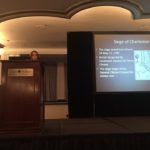 Archival Research and the Historical Background of the 1782 Evacuation of Charleston and the Loss of the Storm Wreck
Archival Research and the Historical Background of the 1782 Evacuation of Charleston and the Loss of the Storm Wreck
Molly L. Trivelpiece and Chuck Meide
During the American Revolution, the British occupied Charleston, South Carolina from their victory at the Siege of Charleston in 1780 until they were forced to flee rebel forces at the end of the war in 1782. The evacuation of Charleston was a massive logistical effort by colonial authorities, involving more than 129 ships gathered from throughout the British Empire. Not only British, Provincial, and German troops were evacuated but thousands of Loyalist families and enslaved Africans, who were transported to various other locales in Canada, England, the Caribbean, and East Florida. One of the ships carrying Loyalists and their possessions, along with some military hardware, ended up wrecking on the notorious St. Augustine Bar, and is now known as the Storm Wreck. This paper provides a historical background of the evacuation and shipwreck as compiled from primary documents analyzed by LAMP researchers in various depositories in Britain and the U.S.
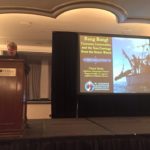 Bang Bang! Cannons, Carronades, and the Gun Carriage from the Storm Wreck
Bang Bang! Cannons, Carronades, and the Gun Carriage from the Storm Wreck
Chuck Meide
The Storm Wreck, one of sixteen Loyalist refugee ships from Charleston lost on the St. Augustine Bar on 31 December 1782, has been excavated for six seasons, 2010-2015. In December 2010, a pile of four 4-pdr cannons and two 9-pdr carronades was encountered on the wreck site, where they were seemingly jettisoned in an attempt to refloat the ship after it grounded. Two of these guns were raised in 2011 for conservation and display. The carronade, whose serial number has been found in Carron Company records, was dated 1780 and is believed to be the second oldest specimen to have survived anywhere in the world. During the 2015 season, another long gun was unexpectedly encountered, about 12 m away from the main cannon pile. It was still attached to the partially preserved remains of its gun carriage. This paper presents an overview of these seven guns and the carriage.
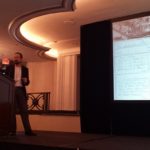 Gone for a Soldier: An Archaeological Signature of a Military Presence aboard the Storm Wreck
Gone for a Soldier: An Archaeological Signature of a Military Presence aboard the Storm Wreck
Brian McNamara
Six seasons of excavation have yielded numerous artifacts from the Storm Wreck, site 8SJ 8459, a ship that wrecked off St. Augustine on 31 December 1782 as part of the Loyalist evacuation fleet from Charleston, South Carolina. Many of these artifacts reflect the presence of military personnel amongst the ship’s passenger grouping. These include Brown Bess muskets and diagnostic regimental uniform buttons, which spurred archival research in England and Scotland that has led to a better understanding of which British Army regiments were in and evacuated from Charleston on the December 1782 fleet. This paper will discuss a number of these artifacts and how they fit within the greater context of the Loyalist evacuation, ultimately leading to the identification of the Storm Wreck as one of sixteen vessels reported lost during that event.
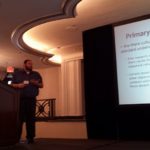 Life Among the Wind and Waves: Examining Living Conditions on Sailing Vessels Through the Use of Microscopic Remains
Life Among the Wind and Waves: Examining Living Conditions on Sailing Vessels Through the Use of Microscopic Remains
Jacob Shidner
In the summer of 2015, sediment samples were collected from the Storm Wreck, a colonial-era sailing vessel that wrecked off the coast of Florida, with the expectation of recovering microscopic remains that would provide insight into the lives of those aboard the vessel. Sediment samples collected from the Emanuel Point wrecks, also located on the Florida coast, were previously analyzed. This material, which consisted of insect remains, animal bones, and botanical remains painted a picture of what living conditions would have been like aboard sailing vessels. It is hoped that comparable remains will be found in the Storm Wreck sediments, leading to a similar understanding of the living conditions aboard. A comparison between the sites would lead to an understanding of the similarities and differences of living conditions in vessels of various nationalities, purposes, and time periods, as well as the site formation processes that affect material preservation and recovery.
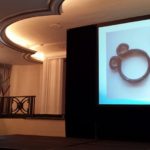 Ship’s Equipment, Fittings, and Rigging Components from the Storm Wreck
Ship’s Equipment, Fittings, and Rigging Components from the Storm Wreck
Eden Andes
This paper addresses ship’s equipment, fittings, and rigging found on the late 18th century Storm Wreck off the coast of St. Augustine, Florida. Components of standing and running rigging are discussed along with the ship’s bell, lead deck pump, bricks, fasteners, and ballast. Rigging components recovered include an intact deadeye with iron stropping, another deadeye strop, a possible chainplate, and a variety of iron hooks and hanks. The lead deck pump was found bent and hacked from its original position in order to throw it overboard in an attempt to refloat the ship after it ran aground. A pump valve, either from the deck pump or the ship’s bilge pump, was also recovered and is undergoing conservation. The ship’s bell, including its clapper and entire wooden headstock, was recovered intact and is also discussed. Bricks found on the site are believed to have lined the hearth in the ship’s galley.
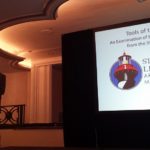 Tools of the Trade: An Examination of Tools found on the Storm Wreck, A Loyalist Evacuation Transport Wrecked on the St. Augustine Bar in 1782
Tools of the Trade: An Examination of Tools found on the Storm Wreck, A Loyalist Evacuation Transport Wrecked on the St. Augustine Bar in 1782
Dr. Sam Turner
This paper examines the collection of tools recovered from the Storm Wreck, a late eighteenth-century Loyalist evacuation transport lost in December of 1782 at the end of the American Revolutionary War on the St. Augustine Bar, in present-day St. Johns County, Florida. A variety of hand tools, many with their wooden handles preserved intact, have been recovered and are currently undergoing conservation treatment. While many of these tools were likely intended for general use in the home or farmstead, some represent those used in the shipbuilding or boat carpentry trade and other specialized professions such as that of the shoe maker.
 An Archaeological Examination of Cookware from the Storm Wreck, 8SJ5459
An Archaeological Examination of Cookware from the Storm Wreck, 8SJ5459
Annie Elizabeth Carter
The Storm wreck is an 18th-century Loyalist shipwreck located off St. Augustine, Florida. The shipwreck excavation has been an ongoing focus of the Lighthouse Archaeological Maritime Program (LAMP) since 2009. An examination of the iron and copper cookware present on site offers an entryway for the analysis and interpretation of Loyalist intentions and lifeways. These goods were once part of a colonial, capitalistic society and were key items for survival in an intermediary and uncertain time for a refugee population. This allows for a view of cookware as both economic and social factors in Loyalist lifestyles; on one end, as objects that defined a sort of comfort and familiarity in the process of creating a home in a highly stressful time, and on the other as objects of profitability. Assessing the cookware assemblage addresses these issues and contributes to a narrative of a people largely forgotten by popular history.
 Archaeology for the Masses: Presenting the Storm Wreck through Public Archaeology
Archaeology for the Masses: Presenting the Storm Wreck through Public Archaeology
Olivia McDaniel
The Lighthouse Archaeological Maritime Program’s (LAMP) position as the research arm of the St. Augustine Lighthouse & Maritime Museum in St. Augustine, Florida, creates the perfect opportunity to extend St. Augustine’s underwater archaeology into the public eye through a series of on-site public archaeology programs. Since the 2009 discovery of the Storm Wreck, a 1782 British Loyalist wreck off the coast of St. Augustine, museum archaeology and education staff have developed a number of programs to present not only the history, research, and conservation performed on Storm Wreck and its artifacts, but also St. Augustine’s broader maritime history and underwater archaeological resources to museum guests. This presentation will discuss these programs and their success at bringing the shipwreck to the public at the St. Augustine Lighthouse & Maritime Museum.
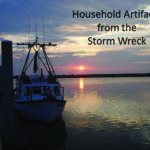 Household Artifacts from the Storm Wreck
Household Artifacts from the Storm Wreck
Christopher McCarron
When Loyalist families evacuated Charleston, South Carolina in December 1782, they carried with them all they could bring from their homes. Domestic artifacts recovered from the Storm Wreck include pewter spoons and plates, a glass stopper, ceramics associated with tea consumption, a variety of iron and copper cookware, fireplace hardware, clothing irons, straight pins, padlocks and keys, furniture hardware, a candlestick, and a door lock stripped from an abandoned home, wrapped in course cloth with its key for transport. These artifacts can give us a general idea of what typical British colonial subjects from a variety of social backgrounds used in their everyday lives, and what items were deemed critical for survival and for attempting to cultivate a sense of normalcy in what were certainly not normal times for these Loyalists forced to flee their homes and start new lives in an unfamiliar colony.
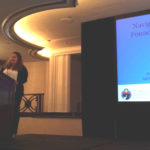 Navigational Instruments found on the Storm Wreck
Navigational Instruments found on the Storm Wreck
Maggie Burkett
Between 2009 and 2015, excavations of the Storm Wreck (8SJ5459), a late 18th-century British shipwreck off the coast of St. Augustine, Florida by the Lighthouse Archaeological Maritime Program (LAMP) has revealed a variety of navigational instruments and components of such instruments. The primary navigational instruments discussed in this paper are a pair of navigational dividers, an octant, and a mathematical device known as a sector rule. This paper presents a historical analysis of each navigational instrument represented in the assemblage, examines the context of these artifacts in relation to the Storm Wreck, and provides insight into the methods used for determining latitude and the ship’s overall position in the late 18th century.
 Taking it Personally: Personal Items from the Storm Wreck
Taking it Personally: Personal Items from the Storm Wreck
Hunter Brendel
The Storm Wreck, a Loyalist refugee vessel fleeing Charleston near the end of the American Revolution in 1782, was discovered by LAMP in 2009. Since 2010, a systematic excavation of the shipwreck has been ongoing, aiming at documenting, recovering, and conserving diagnostic artifacts to further understand this shipwreck and its role in Florida’s Loyalist influx, a time of civil conflict and rapidly increasing population. This paper will review artifacts from the shipwreck categorized as personal items and effects, including spoons, straight pins, belt and shoe buckles, buttons, knives, a dirk sheath, pistols, coins, a lice comb, and a fausse montre or false watch. Most are undergoing conservation treatment though many have been deconcreted and physically examined. Some can be considered diagnostic to affirm the vessel’s date, purpose, and cultural identity, while also providing a greater understanding of the social aspects of those on board forced to flee their homes.
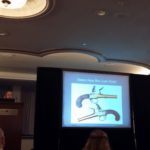 Pew Pew! Small Arms from the Storm Wreck, a Loyalist Evacuation Ship from the End of the American Revolutionary War.
Pew Pew! Small Arms from the Storm Wreck, a Loyalist Evacuation Ship from the End of the American Revolutionary War.
Starr Cox
On or just after 31 December 1782, sixteen ships from a larger fleet evacuating Charleston, South Carolina wrecked while attempting to enter the St. Augustine Inlet. One of these sixteen ships, the Storm Wreck, has been the focus of six seasons of excavation for the Lighthouse Archaeological Maritime Program (LAMP), the research arm of the St. Augustine Lighthouse & Maritime Museum. The firearms recovered from the shipwreck include three Brown Bess muskets, two of which were loaded and in the half cock position, an intact and highly decorated pocket or Queen Anne’s style boxlock pistol, and the remains of a wooden handle from an additional small pistol. This paper will discuss the small arms recovered from the site thus far, conservation challenges, and what these arms mean for the interpretation of this site.
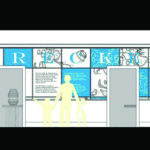 Wrecked! An Interactive Exhibition on a Revolutionary War Shipwreck in St. Augustine, Florida
Wrecked! An Interactive Exhibition on a Revolutionary War Shipwreck in St. Augustine, Florida
Brenda Swann
The upcoming exhibition of the Storm Wreck, a Revolutionary War shipwreck in St. Augustine, Florida, is two-fold. As with traditional archaeology exhibits, it will share how historical documents and artifacts from the shipwreck tell the story of British Loyalists who, after evacuating Charleston, South Carolina and leaving behind all they knew and taking with them only what they treasured and needed most, arrived in St. Augustine only to run aground and have many of their precious few items buried on the ocean floor. The Discovery Lab part of the exhibit will allow visitors to participate in the methods and processes of archaeological discovery through hands-on stations including the Navigation Station, X-ray Station, Survey Station, Maritime Archaeology Station, and more. This paper provides a “sneak peak” of this exciting exhibition opening in Spring 2016 at the St. Augustine Lighthouse & Maritime Museum!
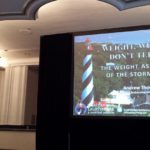 Weight, Weight . . . Don’t Tell Me: the Assemblage of Weights from the Storm Wreck
Weight, Weight . . . Don’t Tell Me: the Assemblage of Weights from the Storm Wreck
Andrew Thomson
The Storm Wreck was a British refugee vessel that ran aground off St. Augustine 31 December 1782. As part of the evacuation fleet of Charleston, South Carolina, it was responsible for transporting the Loyalist population and their goods necessary to begin life again in East Florida. An unassuming assemblage of artifacts from the excavation can help elucidate aspects of the refugees’ lives, their thought process during the evacuation, life aboard the ship, and the eventual wrecking event. A wide range of weights, mostly cast from lead, has been recovered on the shipwreck, ranging from fishing weights cast using musket ball molds to merchant pan weights to a large livestock tether. This paper will discuss the identification, conservation and interpretation of the numerous weights found throughout the Storm site.
Hidden in Plain Sight: Monitoring Shipwrecks in the Atlantic Waters of St. Augustine, Florida
P. Brendan Burke
The preservation of submerged heritage in Northeast Florida benefits from poor diving conditions and a lack of awareness of submerged site locations in the region. Overshadowed by the well-known treasure wrecks along Florida’s Treasure Coast and the Florida Keys, the northeastern portion of the state still maintains some of the oldest shipwrecks in North America. As part of the First Coast Maritime Archaeology Project, archaeologists from the Lighthouse Archaeological Maritime Program, the research arm of the St. Augustine Lighthouse & Maritime Museum, have periodically monitored shipwrecks near St. Augustine to study wreck conditions, exposure, degradation, and looting activities. Since 2007, regularly acquired sidescan sonar data has provided an additional technique for comprehensively monitoring and recording local wrecks. This paper presents selected findings from eight years of monitoring shipwrecks near the Nation’s Oldest Port.




